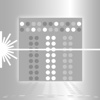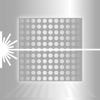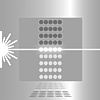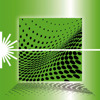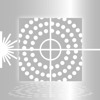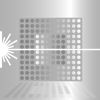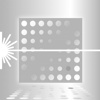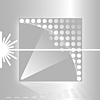RLS-GD Series
Gloss detection sensors
GENERAL TECHNICAL DATA:
| Software | Windows® PC software: RLS-GD-Scope |
| Voltage supply | +24VDC (± 10%), reversed polarity protected, overload protected |
| Current consumption | <110mA |
| Max. switching current | 100mA, short-circuit proof |
| Measurement geometry | Standard measurement angles: ► 20°: for high-gloss surfaces A 20° gloss sensor is used if gloss grades >70GU are to be determined. That is, if the gloss grade measured with a 60° gloss meter is >70GU, a 20° gloss sensor is used. ► 45°: TAPPI standard (paper industry) for glossy surfaces ► 60°: for semi-gloss surfaces A 60° gloss sensor is used if gloss grades >10GU and <70GU are to be determined. This variant is an "all-rounder". The 60° gloss sensor is therefore standard for most applications. ► 75°: TAPPI standard (paper industry) for matt surfaces ► 85°: for matt surfaces An 85° gloss sensor is used when gloss grades <10GU are to be determined. That is, if the gloss grade measured with a 60° gloss meter is <10GU, an 85° gloss sensor is used. [GU = Gloss Unit] |
| Light source | depends on sensor type |
| Working distance | depends on sensor type |
| Size of light spot | depends on sensor type |
| Optical filter | depends on sensor type |
| Ambient light | up to 5000 Lux |
| Interface | RS232, parameterisable under Windows® |
| Switching frequency | max. 5kHz (depends on averaging) |
| Outputs digital (5x) | OUT0...OUT4 (Qinv or Q, adjustable via PC) |
| Outputs analog (2x) | 0...+10V and 4...20mA |
| Input (1x) | IN0 (by means of teach button at the housing) |
| Sensitivity (switching threshold) |
adjustable under Windows® (selection threshold/tolerance window) |
| Pulse lengthening | 0...100ms (adjustable under Windows®) |
| Transmitter power | adjustable under Windows® |
| Averaging | max. 32768 values (adjustable under Windows®) |
| Switching state indicator | by means of 5 yellow LED |
| Housing dimensions | depends on sensor type |
| Housing material | Aluminum, anodized in blue |
| Type of connectors | - to PLC: 8-pole fem. connector Binder 712 - to PLC (optional): 4-pole fem. connector Binder 712 - to PC: 5-pole fem. connector Binder 712 |
| Connecting cables | - to PLC: cab-las8/SPS - to PLC (optional): cab-las4/SPS - to PC: cab-las5/PC, cab-5/USB or cab-5/ETH |
| Operating temp. range | -20°C ... +55°C |
| Storage temp. range | -20°C ... +85°C |
Enclosure rating |
IP54 |
| EMC test acc. to | DIN EN 60947-5-2 |









